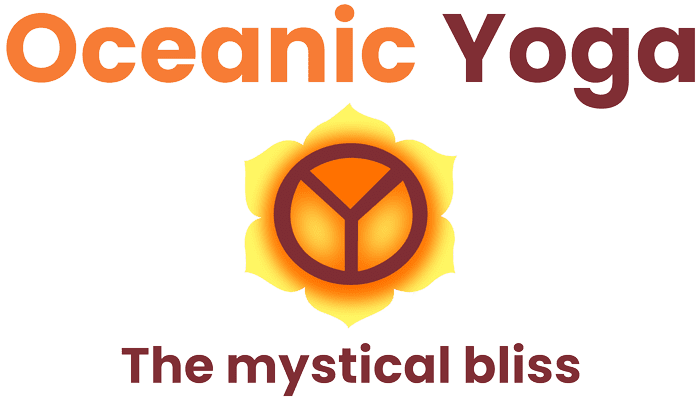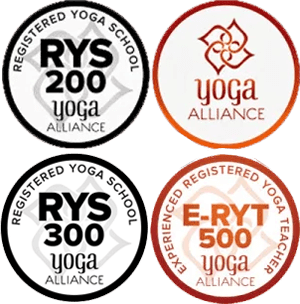Yin Yoga belongs to the field of roots, deep in the ancient wisdom of Taoist philosophy and traditional Chinese medicine (TCM). It is being recognised globally for its incredible benefits toward mind, body, and spirit. So if you are thinking of enriching your practice or teaching repertoire, one of the most rewarding opportunities in this discipline awaits you at the Yin Yoga Teacher Training.
In this blog, we shall discuss the technical aspects of Yin Yoga, the depth of its origin, the advantages, and what to expect from a training program with an instructor in this blessed location.
Types of Yoga
Yin Yoga Teacher Training in UK
Origins and History of Yin Yoga

Modern practice of Yin Yoga is relatively new, but it has a very, very deep root in ancient Eastern traditions. Paul Grilley popularised the practice in the late 20th century, largely inspired by the work of Paulie Zink, a Taoist yoga master. Grilley combined traditional Hatha Yoga with some insights gathered from TCM from ideas related to the concepts of the meridians (energy channels) and balance between Yin and Yang energies.
1. Taoist Inspiration
The essence of the Taoist philosophy is the balance of the passive, receptive energy called Yin and the active, dynamic energy called Yang. Yin Yoga enshrines this very principle as a practice of quietness, relaxation, and deep work on connective tissue inside, while most Yang forms would involve movement and dynamism, such as in Vinyasa or Ashtanga Yoga.
2. Meridians and Energy Flow
In TCM, a meridian is a pathway through which the life force energy, known as Qi, flows. The Yin Yoga poses are tailored to enhance the free flow of energy by stimulating these meridians and hence contribute to the natural healing of all parts of the body.
Technical Aspects of Yin Yoga

Here are some of the technical aspects of Yin Yoga:
1. Targeting the Connective Tissues
Yin Yoga targets not only the body’s muscles but more on its connective tissues, ligaments, fascia, and joints. Some poses are held for longer periods, between 3 to 5 minutes or more, so that deep, sustained stress can be elicited within these tissues. Gentle stress will strengthen them, make them more flexible, and more hydrated with time.
2. The Role of Fascia
Connective tissue, also called fascia, surrounds the muscles, bones, and organs. The holding of the asanas gently stretches and compresses the fascia, which may provoke release in tension and increase mobility while bringing a greater harmony to the body and energy.
3. Yin Yoga Postures
Yin Yoga uses a variety of seated and supine postures with an aim to access deeper layers of the body. These include:
- Butterfly Pose (Baddha Konasana): works deep into the hips, thighs, and the groyne region and is a stimulation point of the Kidney and Liver meridians.
- Dragon Pose (Anjaneyasana): Therefore, it works deep onto the quadriceps and hip flexor muscles, thus activating the Stomach and Spleen meridians
- Caterpillar Pose (Paschimottanasana): takes the spine and hamstrings as a stretch, thus stimulating the Urinary Bladder meridian.
Advantages of Yin Yoga
1. Increased Flexibility and Mobility of the Joints
Yin Yoga work at deeper connective tissues. It moves toward increasing flexibility, which is a greater range of motion between joints. Long Held postures cause the stretching and strengthening of fascia, ligaments, and tendons, all leading to a more supple and resilient body.
2. The Balancing of the Nervous System
Because Yin Yoga has a profoundly calming effect on the nervous system, it encourages the parasympathetic nervous system the “rest and digest” state. This yoga reduces stress, anxiety, and tension and therefore acts as a marvellous mindfulness practice to cultivate inner peace.
3. Energy Circulation Improved
Opening up of the meridians due to the practice of Yin Yoga favours all activities that promote the free flow of Qi in different parts of the body. The advantages would then be all round health, more vital energy, and emotional balance.
4. Best Combined with Other Yoga Varied Styles
Yin Yoga can add a nice balance to more energetic yoga practices such as Vinyasa or Power Yoga. With Yin Yoga, you complete your practice that balances both the active as well as the passive factor of your physical as well as your energetic body.
Why Yin Yoga Teacher Training in Goa?

1. Holistic learning environment
India, more specifically Goa, has serene beaches and lush greenery, which provides an atmosphere for serenity in deep and reflective practice. This place has training programs that are well designed to offer a complete perspective regarding Yin Yoga Teacher Training in Goa along with philosophical teachings as well as meditation practices.
2. Expertise from Experienced Instructors
In Goa, you could meet the teachers who are proficient not only in the technical manipulations of Yin Yoga but who are deeply rooted in its philosophical and energetic principles. They have worked long in practice and study and bring students an important experience of learning.
3. Cultural and Spiritual Enrichment
India, the birthplace of yoga, is the native environment you can directly touch, seeing ancient traditions and spiritual energy underneath the practice. Taste Goa’s fantastic blend of Indian culture with Portuguese influence to create an unforgettable encounter.
Things to Do Before Attending Your Yin Yoga Teacher Training in Goa

1. Deepen your personal practice
To prepare for it as much as possible, start by practising Yin Yoga well before the beginning of your Yin Yoga Teacher Training in India. You can achieve this by regularly practising Yin Yoga so that you come to know the postures and the sensations, both physical and energetic, they bring about.
2. Learn the Fundamentals
This will enable you to be more profoundly immersed in the training and will help you apply better. Understanding TCM basics, that is, Yin and Yang, meridians and Qi, is important while trying to grasp the deeper aspects of Yin Yoga.
3. Enjoy the Journey
Enjoy the journey and take the training as such. Be receptive to the technical as well as spiritual approach of Yin Yoga. The course is not just a teaching skill but for more personal growth and transformation.
Conclusion
Yin Yoga Teacher Training in Goa is a unique opportunity to deepen into this powerful practice from a setting that cultivates technical learning with spiritual growth. This course in Goa, India can help you develop your personal practice or provide the tools and insights necessary to become a certified Yin Yoga teacher.
Take this journey in the serene atmosphere of Goa and realise the depth of Yin Yoga practice for yourself as well as its impact not only upon you but also on your future students. Namaste.
Why Should You Become a Yoga Teacher?








